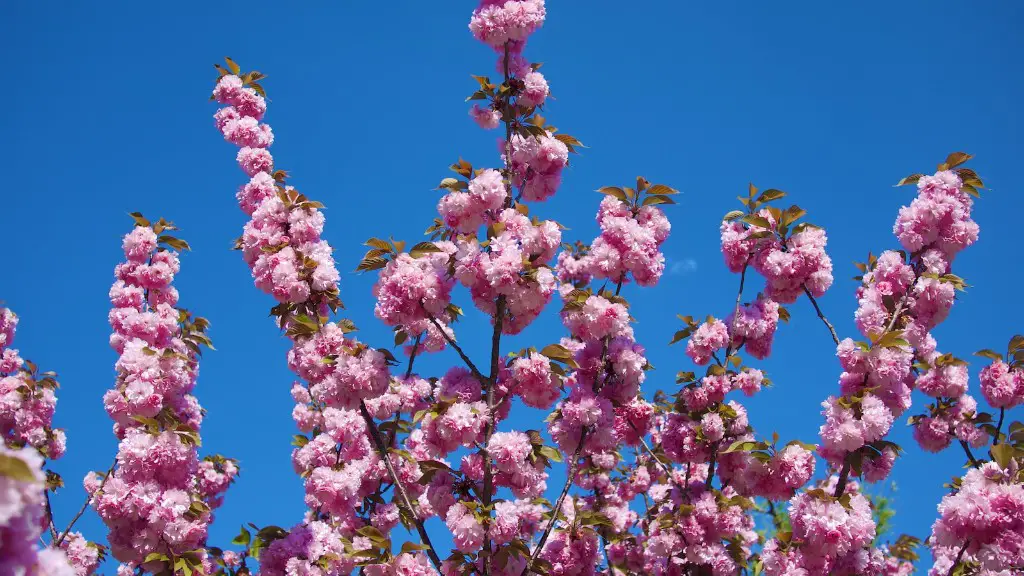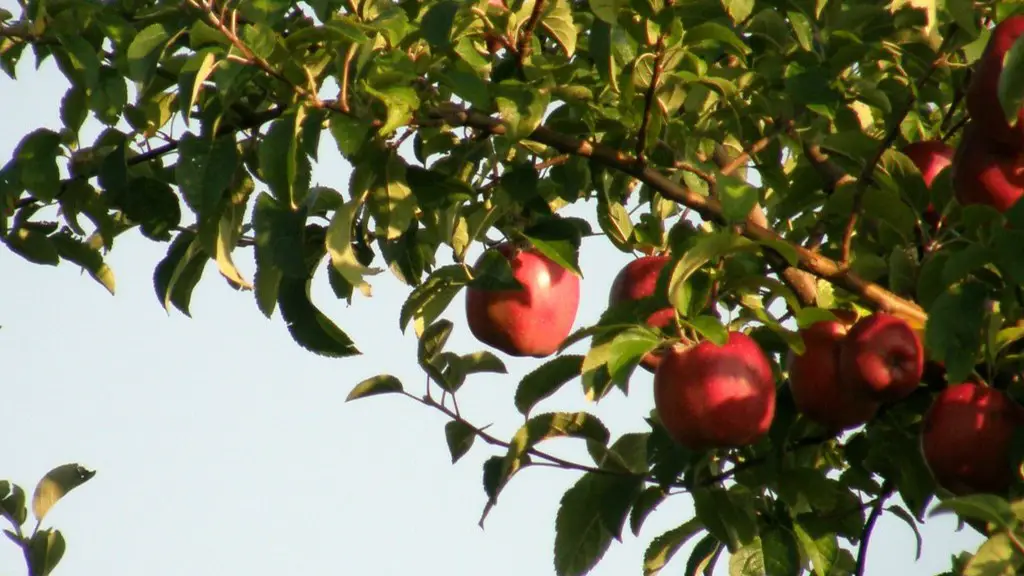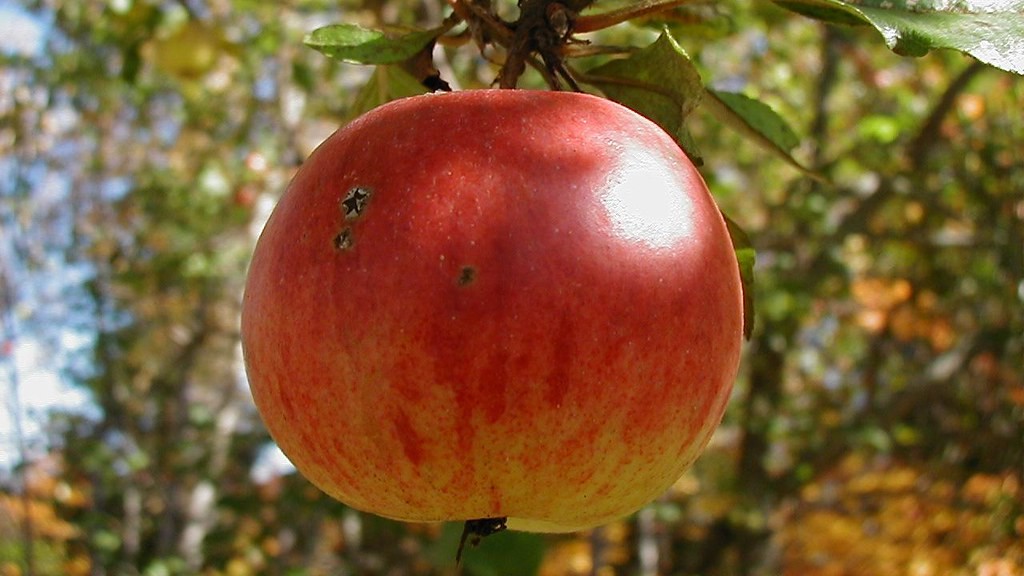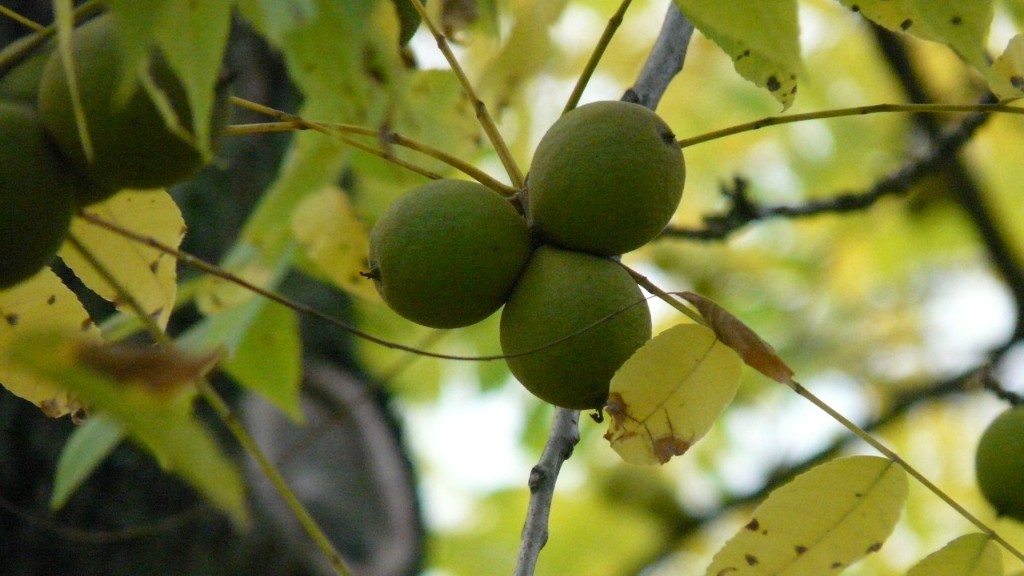Cherry trees have grown in popularity over the years and are a popular choice for many homeowners. However, not everyone is familiar with what a wild cherry tree looks like and how to identify them. To help you out, here are some tips on how to identify a wild cherry tree.
The first thing to look for when identifying a wild cherry tree is its leaves. The leaves of most wild cherry trees are oblong in shape and have serrated edges. They are a medium green colour in the summer and can change to a reddish-brown in the autumn. Additionally, the leaves of wild cherry trees can be smooth or woolly on their underside and have small glands along their edges.
Another identifying factor of wild cherry trees is the bark. The bark of wild cherry trees is gray and is mostly smooth with vertical cracks. This kind of bark is also often covered with a white or grayish powdery bloom. The trunk of wild cherry trees is usually short and stout, and it’s limbs are often twisted and contorted.
The flowers of wild cherry trees are another signal that you have found one. Wild cherry trees produce small, white flowers in the spring that have five petals and are fragrant. These white flowers will usually have the leaves of the wild cherry tree wrapped around them.
Finally, the fruit of the wild cherry tree can be another indicator that you have found one. Wild cherries are extremely small and round, usually only around 1-5 cm in diameter. The colour of wild cherry fruits range from a deep reddish-brown to a light yellow-green. They contain a single stone and have a sweet flavour.
Understanding the Growing Habits of Wild Cherry Trees
Wild cherry trees generally prefer moist, acidic soils and sunny to partly shaded areas. As such, wild cherry trees are often found in disturbed soils or in open, grassy areas in rural settings. They are also resilient trees that can survive in a variety of temperatures, making them a popular choice for landscaping.
In terms of growth, wild cherry trees tend to grow slowly at first, but can reach up to 30 feet in height when fully matured. They are short-lived trees, usually living anywhere from 20 to 50 years, and they have a high tolerance for pruning. Wild cherry trees also have a shallow root system, which means they can be prone to toppling in strong winds.
Fruit production of wild cherry trees usually begins at around four to seven years of age. It is important to note, however, that wild cherry trees tend to produce very small fruits with a single stone, and these fruits are relatively sour in flavour compared to domesticated cherry trees.
Know the Benefits of Wild Cherry Trees
Wild cherry trees offer many benefits to the landscape. They are commonly used as ornamental trees due to their attractive bark, flowering, and foliage. Additionally, they provide excellent habitat for wildlife, and the sweet-tasting fruits that they produce are enjoyed by birds and other animals.
Wild cherry trees are also popular for the production of cherry wood. The wood of wild cherry trees is light to medium in colour and is highly valued for its aesthetic qualities. It is often used in furniture making, woodworking, and other wood craft projects.
Precautions to Take When Dealing With Wild Cherry Trees
Despite the many benefits of wild cherry trees, there are also some risks to be aware of when dealing with them. In particular, wild cherry trees are vulnerable to a number of different diseases and pests, such as powdery mildew, and aphids. As such, it is important to inspect them regularly and treat them as needed.
Furthermore, wild cherry trees are particularly vulnerable to damage from strong winds and heavy snowfall. As such, it is important to plant them in sheltered areas, and to securely stake them to ensure they remain upright.
Wild Cherry Tree Maintenance Tips
Once you have identified and planted your wild cherry tree, there are some steps you can take to ensure it grows and flourishes in your landscape. It is important to note that wild cherry trees are shallow-rooted, so they require plenty of moisture to thrive. As such, it is important to water your wild cherry trees regularly, especially during dry spells.
The other key element for maintaining a healthy wild cherry tree is proper pruning. Wild cherry trees are fairly tolerant of pruning, but it should only be done during the winter when the trees are dormant. Care should be taken when pruning wild cherry trees as to not damage the bark or remove too much from the branches.
Identifying and Dealing with Common Wild Cherry Tree Pests
Wild cherry trees can suffer from a number of pests and diseases, and it is important to be able to identify them in order to keep your tree healthy. Aphids are one of the most common pests that afflict wild cherry trees. These tiny pests feed on the leaves and stems of wild cherry trees and can cause stunted growth and leaf discolouration. Regularly inspecting your tree and pruning off affected branches can help to control the spread of aphids.
Powdery mildew is another common disease that affects wild cherry trees. This fungus causes a white, powdery growth to appear on the leaves and can cause them to shrivel and die. To prevent powdery mildew, it is important to ensure that your tree is receiving plenty of air circulation, and to prune off any affected branches. Additionally, fungicides can be used to treat powdery mildew infections.
Conclusion
Learning how to identify a wild cherry tree is the first step in making sure it thrives in your landscape. Wild cherry trees offer lots of benefits, from providing ornamental beauty to attracting wildlife. Furthermore, wild cherry trees are relatively easy to maintain, but it is important to understand the common pests and diseases that can affect them in order to keep them healthy. With a little bit of knowledge and care, wild cherry trees can provide many years of enjoyment.




